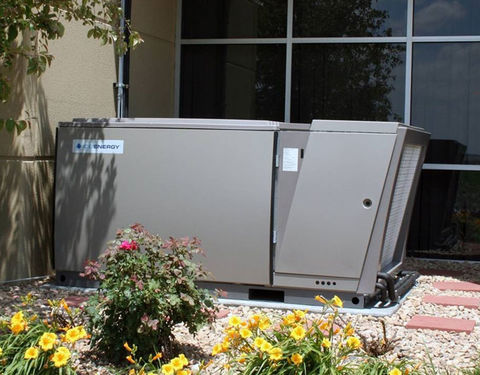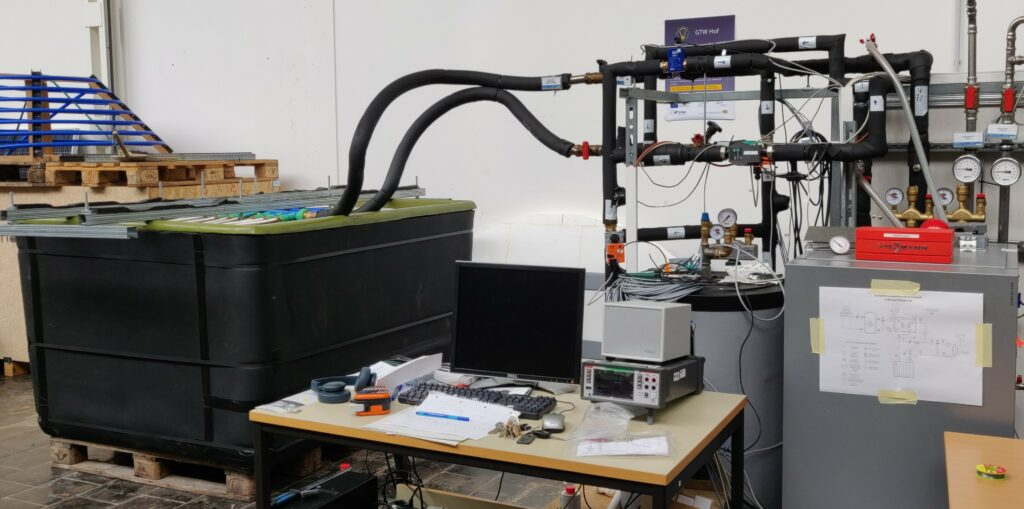In recent years, rising global temperatures have increased the demand for efficient cooling solutions in buildings. Traditional air conditioning systems consume vast amounts of electricity and contribute to greenhouse gas emissions. However, a new, innovative technology involving ice-based batteries promises to change this scenario by cooling buildings in a more energy-efficient and environmentally friendly way.
This technology, known as ice battery systems, uses ice as a natural storage medium to reduce building temperatures and save energy. Instead of relying solely on conventional air conditioning units, buildings equipped with ice batteries freeze water at night when electricity demand is low and use the stored ice to cool indoor spaces during the day. This approach not only cuts down on electricity costs but also helps balance the power grid by shifting energy use to off-peak hours.
How Ice Batteries Work

Ice batteries operate on a simple but clever concept. During nighttime hours or periods of low electricity demand, electricity is used to freeze water inside insulated tanks. This frozen ice then acts as a cold reservoir. During the hotter daytime hours, instead of running energy-intensive compressors, the system circulates air or water through the ice tank to absorb the cold and distribute it throughout the building.
This method of cooling is highly efficient because the system uses electricity when it is cheaper and cleaner (often when renewable energy like wind or solar is more available). It also reduces strain on the electrical grid during peak hours, which is when energy demand and costs are typically highest.
Buildings equipped with ice battery technology can reduce their peak energy use by up to 30%, which translates into significant cost savings for building owners and less environmental impact. According to industry experts, widespread adoption of ice batteries in commercial and residential buildings could help cities reduce their carbon footprints dramatically.
Benefits of Ice Battery Technology for Buildings
The use of ice batteries offers multiple benefits for building cooling and energy management:
- Energy Efficiency: Ice batteries allow buildings to use energy during off-peak hours, making cooling systems more efficient and reducing peak electricity demand.
- Cost Savings: By shifting electricity use to cheaper nighttime hours, building owners can save on energy bills.
- Environmental Impact: Ice cooling reduces the need for fossil fuel-based electricity and lowers greenhouse gas emissions linked to air conditioning.
- Grid Stability: By balancing the load on the electrical grid, ice batteries help prevent blackouts and improve overall power reliability.
- Reduced Wear on HVAC Systems: Since the cooling load is partly shifted to ice storage, the traditional HVAC systems operate less, extending their lifespan and reducing maintenance costs.
Real-World Applications and Projects
Several companies and research institutions are already exploring ice battery solutions. For instance, Calmac, a leading developer of thermal energy storage systems, has installed ice battery systems in many commercial buildings across the United States. These systems have proven successful in reducing energy consumption and peak demand charges.

In Singapore, where cooling accounts for a large share of electricity use, pilot projects using ice battery technology are underway to make buildings more sustainable. The government supports these innovations as part of its Smart Nation initiative aimed at improving energy efficiency.
Another example comes from a large hospital in California that installed an ice battery system to reduce its energy costs while maintaining critical cooling needs. The hospital reported a 20% reduction in peak electricity use during hot summer months, demonstrating the potential impact of this technology in demanding environments.
Challenges and Future Prospects
While ice battery technology is promising, there are some challenges to its wider adoption:
- Initial Installation Costs: Ice battery systems require investment in specialized equipment and storage tanks, which may be costly upfront.
- Space Requirements: The tanks and infrastructure needed to store ice may require significant space, which can be a constraint in dense urban buildings.
- Integration with Existing Systems: Retrofitting ice batteries to older buildings with traditional HVAC systems may pose technical challenges.
Despite these hurdles, industry experts are optimistic about the growth of ice battery technology. Advances in materials, tank design, and integration software are making these systems more compact and affordable. As the demand for sustainable cooling solutions grows, ice batteries are expected to become a standard option in green building designs.
How Ice Batteries Support Global Energy Goals
The International Energy Agency (IEA) reports that cooling currently accounts for about 15% of global electricity use, a figure expected to double by 2050 due to rising temperatures and increased urbanization. Innovations like ice battery technology offer a practical way to meet this growing demand sustainably.
By reducing the reliance on conventional air conditioning units, ice batteries help cut peak electricity loads and support the integration of renewable energy sources into the grid. This aligns with global climate goals to reduce carbon emissions and transition to cleaner energy systems.
Buildings represent a significant part of the climate challenge, but also the solution. Technologies like ice batteries are key tools in creating smarter, more energy-efficient buildings that reduce environmental impact while enhancing occupant comfort.
Conclusion
Ice battery technology is an exciting innovation that uses the natural cooling power of ice to reduce building temperatures and energy consumption. By freezing water during off-peak hours and using that stored ice to cool buildings during the day, these systems offer a cost-effective and environmentally friendly alternative to traditional air conditioning.
As cities worldwide seek to reduce carbon emissions and manage growing energy demands, ice batteries represent a promising step forward in sustainable building technology. Though some challenges remain, ongoing advancements and successful pilot projects demonstrate the potential for this technology to revolutionize how we cool buildings and manage energy efficiently.
For more on innovative energy storage and cooling solutions, visit Energy Storage News and learn how the future of building cooling is changing.
Also Read – Meet QNodeOS: World’s First OS for Quantum Networks






